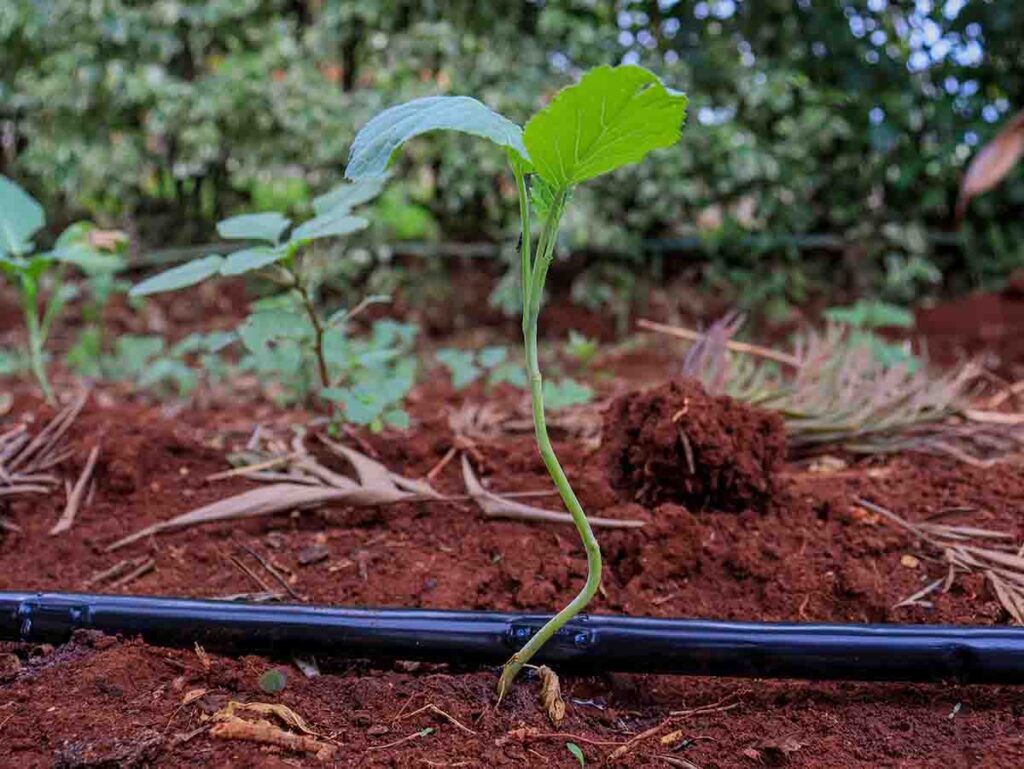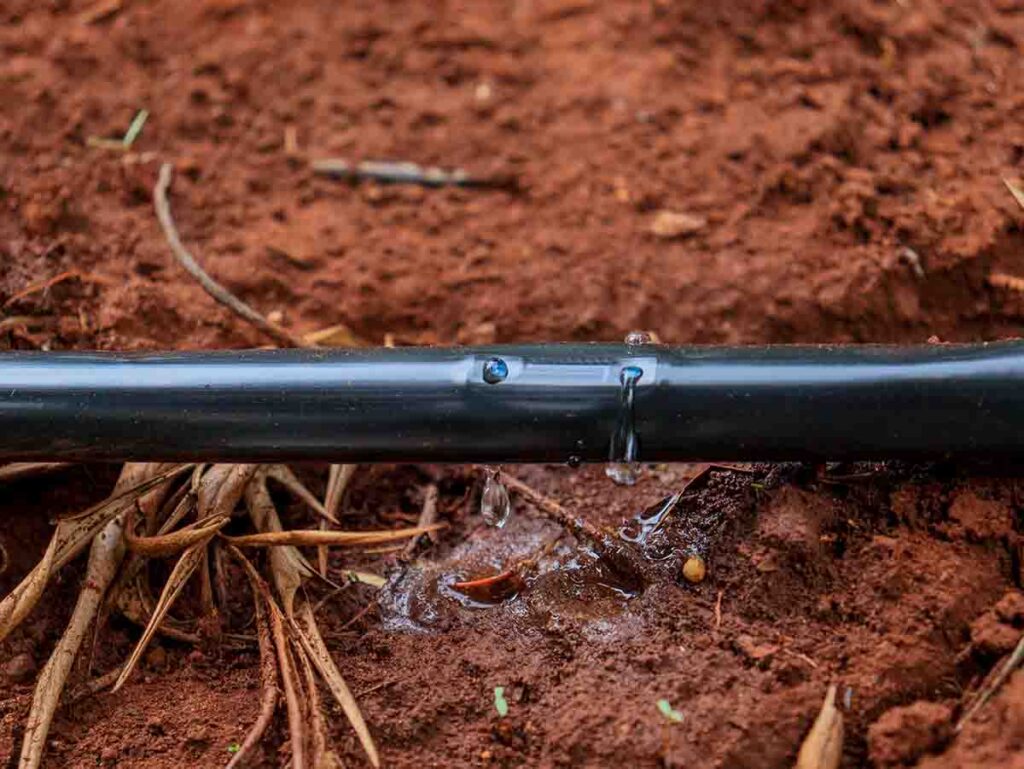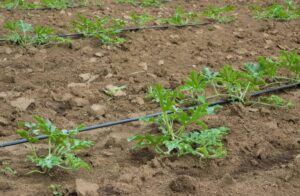Small amounts of water can be supplied to crops using drip tapes in Kenya. The pipe contains a thin layer with holes that ooze out tons of water in equal amounts.
Smart Irrigation with Drip Tapes
Releasing water in small amounts to plants saves much of it and reduces overhead loss. Drip tapes supply water under low pressure and register a low radius of flow. It makes plants’ access to moisture easier.

Specifications of Drip Lines
- Flow rates of 1.5 – 3 L/H.
- The diameter size is 16mm.
- Wall thickness ranges from 0.2 to 0.4 mm.
- Emitter hole spacing can be 15 cm, 20 cm, and 30 cm.
- Available in a roll length of 1000m.
Types of Drip Tapes in Kenya
Drip tapes come in various emitter hole spacing, wall thickness, emitter design, and roll length.
Drip emitter Spacing
The space between emitter holes is equal along the entire pipe and varies per crop type.
Common spacings are;
15 cm – suitable for vegetables and closely spaced crops
20 cm – some vegetables, onions, capsicum
30 cm – a wide-spaced variety of crops.
Drip Emitter Design
Drip Tapes consist of either single or double emitter holes.

Accessories for Drip Tape Connection
Start Connectors
For start connection of driplines to the lateral pipes
End Caps
Accessories or drip fittings that are used to close drip tape end parts. Water flow needs to be avoided at drip line ends for maximum conservation.
Grommets
Grommet rubbers are applicable in making a waterproof connection between the sub mainline and drip tapes.
How to Distribute/Lay Drip Emitters on a Farm
You can lay drip tapes in different quantities or intervals per unit size of a farm. What matters is the size of the farm and the type of crop to propagate.
On a scale of 1 acre, the number of drip emitters ranges from 1-3 lines per bed. With this range, the crop growing is not overcrowded or over-spaced.
When the basis is the type of crop you prefer to grow, ensure that a proper space is kept. Spacing emitters will determine the water use efficiency and the required number for the farm.
What Makes Drip Tapes Preferrable
Weed control with drip irrigation is on another level. The method beats pesticide use and other methods of weed management.
There is water conservation and fertilizer management with drip tapes. Drip lines allow a great balance of water levels that reach each crop at a time.
Maximum harvest comes from drip tape application in crop irrigation. Utilization of drip irrigation provides the optimal water and nutrient needs.
It contributes to the low cost of production. The thought of cost reduction is exciting as you surely want to cut down production costs.
Drip tape are for use in flat or undulating landscapes. Pressure-compensating drip lines can work on slopy landscapes.
The lifespan of drip tapes is higher as they are products of tough non-degradable polyethylene.
Polyethylene is resistant to insects, harsh climatic conditions, and UV radiation.
It is easier to spread them or cut them for connection on the farm.
Moreover, the non-reactive nature of drip tape makes it good for water distribution in various soil PH levels.
Common Uses of Drip Tapes in Irrigation
- Watering crops on the field includes both small-scale and commercial irrigation schemes.
- For irrigation in smart techniques such as hydroponics and drippers.
- Greenhouse crop irrigation
- Garden crop irrigation on Multi-Storey and backyard gardens.
How much do Drip Tapes cost in Kenya?
The price of drip tapes is KES 8,500 for a roll of 1000m length at Aqua Hub Kenya. Our accessories are the best on the market.
Call 0790719020





